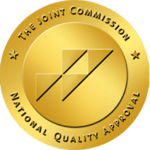Inpatient treatment is a specifically tailored program where individuals in recovery receive the necessary care to overcome addiction. In an inpatient program, the individual resides at the hospital or treatment center for the duration of treatment. The length of time required depends on the person, the severity of the addiction, their physician’s decisions, and the treatment center. Understanding what comes after inpatient treatment can help you choose the right treatment program for your specific needs.
What to Expect in Inpatient Treatment
Clients should meet certain criteria in order to be admitted to an inpatient treatment program. In more severe cases of addiction, signs may have to show that the individual has a dangerous dependence and would benefit from immediate residential care.
While criteria for admission may vary based on location and the addiction treatment center, you’ll typically find the following in an inpatient program:
- Medical detoxification treatment
- Rehabilitation
- Counseling
However, one of the main differences between inpatient treatment and outpatient programs is that inpatient treatment provides specific and round-the-clock monitored care for those who experience intense withdrawal symptoms. Medication may be given based on the client’s needs and health.
What Comes After Inpatient Treatment?
After inpatient treatment, clients have several options. It’s important for those in recovery to have support and ongoing treatment as they return to their everyday lives. Individuals who choose to return to their original living environments or live independently face increased chances of relapse.
Returning to the environment where addiction originated or grew is not recommended. While inpatient treatment and medical detox address the physical challenges of overcoming a chemical dependency, it does not fully address the emotional challenges that await. Some of the options for ongoing treatment could include:
- Sober living
- Outpatient care
- 12-step meetings
- Aftercare
Sober living facilities may range in type, restrictions, price, location, and style, but they all provide a safe environment that is free from drugs and alcohol. Sober living residences may be suburban houses, condominiums, or city apartment complexes. They may exist in more remote, quiet areas or in the heart of bustling cities. Regardless of location, staff members work to ensure that the home is quiet, safe, and peaceful.
In sober living homes, residents must abide by house rules. Therapy, group meetings, house chores, visitor restrictions, and curfew must all be adhered to. The most important requirement for sober living is that all residents must maintain their sobriety while living there. While each sober living facility has its own specific set of rules and guidelines, certain homes may issue readmission at their discretion.
Sober living residences exist to serve sobriety. So residents who struggle with consistent relapse may need help beyond what sober living services can offer. Staff may recommend additional treatment programs, hospitals, or addiction experts who can better address struggles with relapse.
The Road to Recovery
The road to recovery is ongoing and can be unpredictable. Sober living can help prepare for unforeseen triggers and obstacles, which may get in the way of maintaining sobriety.
Individuals in recovery may choose to stay at a sober living residence for as little as a month, though many experts recommend that longer stays are more beneficial. For a nine-month duration, recovering substance abusers will be able to build a healthy and structured routine, complete with therapy, peer support, and time away from harmful influences.
Sober living, addiction therapy programs, and 12-step meetings all provide tools for the individual to tackle the root causes of their addiction. These modalities encourage transparency and honesty while getting rid of harmful coping mechanisms like avoidance. Sober living and therapy help individuals find alternative coping methods through trusted conversation and support and wellness activities like yoga or physical fitness.
Recovery is not a one-size-fits-all journey. It takes various methods to determine how an individual will cope. Replacing addiction with other healthy coping mechanisms can be beneficial.
Reach Out to Westwind Recovery®
At Westwind Recovery®, we offer treatment programs that help our clients prepare for a life in recovery. We also offer other programs designed to aid those in recovery as they make the transition back to everyday life. Learn more today.

Dr. Deena is the Chief Clinical Officer of Westwind Recovery®, an award-winning outpatient treatment center in Los Angeles where she oversees the clinical and administrative program and treatment methods. Dr. Deena is a doctor of psychology and licensed clinical social worker since 1993. LCSW #20628. Originally from the East Coast, Dr. Deena has worked running treatment centers, worked as a therapist in psychiatric hospitals as well as school settings and currently has a thriving private practice in the LA area. Dr. Deena has appeared regularly on the Dr. Phil Show as an expert since 2003. She has also been featured on many other TV shows, podcasts and has contributed to written publications as well as podcasts.



